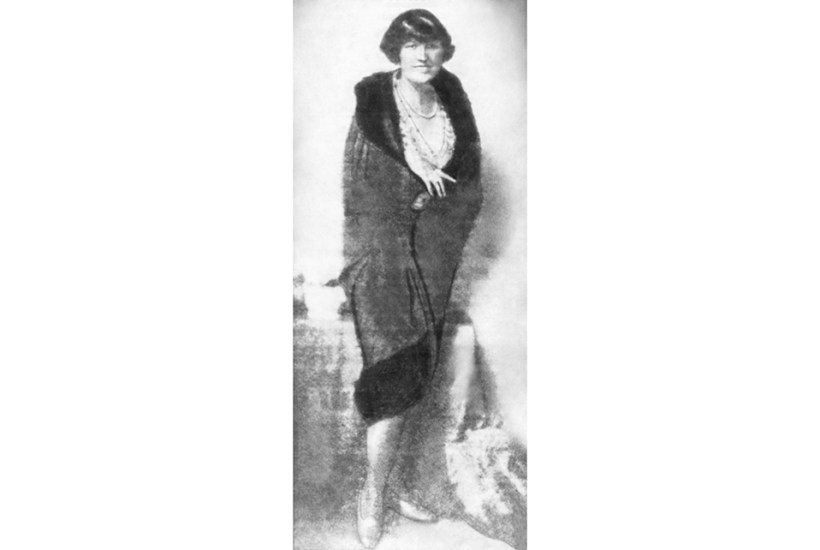Kitty’s Salon is the only English-language book about the eponymous wartime Berlin brothel, which was rigged with microphones and surveillance equipment by the SS to capture the secrets of foreign ambassadors, political rivals and high-ranking government officials. Led by ‘the man with the iron heart’, Reinhard Heydrich, it is one of the last Nazi operations still shrouded in mystery.
It is easy to see why. Right from the outset, the book’s authors, Nigel Jones, Urs Brunner and Julia Schramel, note that there are ‘practically no cast-iron sources for the events at Salon Kitty and the people who frequented it’. This is most likely why, after an introduction, the subject doesn’t reappear until chapter eight of the book. The bulk of Kitty’s Salon is about the sexual proclivities of the Third Reich’s most senior members and a history of prostitution in Germany, from the liberal Weimar period through Hitler’s ascent to power and all the way up to 1945.
Most information about the brothel comes from Madam Kitty, published in German in 1970, whose author Peter Norden described it as a ‘documentary novel’ (the authors of this book note that ‘he certainly did serve up some untruths’). It spawned the famous sexploitation film Salon Kitty in 1976.
Kitty’s Salon relies primarily on the 1956 memoirs of Heydrich’s counter-intelligence leader Walter Schellenberg to uncover whatever can be known about the brothel’s operation. No doubt trying to distance himself from the Nazi leadership, Schellenberg writes that Heydrich proposed setting up a place where VIP visitors would be offered ‘seductive feminine companionship’, and that in ‘such an atmosphere, the most rigid diplomat might be induced to unbend and reveal useful information’. He reveals that he set up such a place in Berlin, installing microphones and SD technicians in the basement. In 1959, an article in Stern magazine elaborated further: ‘Long cables linking to microphones were hidden under the carpets, behind picture frames and in cupboards. Hidden cameras were also placed in almost all rooms.’
Information about the clientele comes from sparse sources, mostly interviews with women who claimed to have worked at Salon Kitty. Liesel Ackermann told Der Spiegel in 1976 that she had entertained many high-ranking government officials, including the Wehrmacht general Hans von Schummer und Osten (the leader of the Nazi state sports programme), the foreign minister Ribbentrop and, most notoriously, Mussolini’s son-in-law, Gian Galeazzo Ciano – a notable ladies’ man who once had an affair with Wallis Simpson. The authors theorise that he was ‘lured there and trapped into making indiscreet and damaging remarks that could be used against him’. It was well known that he did not like Germans, and even warned Belgium that Hitler was about to attack in 1940. Another woman who claimed to have worked there was interviewed anonymously by a TV crew in 2004, and attested to rigorous pre-employment screening, and questioning about Hitler.
The book offers a mish-mash of information pertaining to attitudes about sex, prostitution and women from the Weimar period to the end of the second world war. Paragraphs detailing the concentration camp brothels and the bizarre sadomasochistic relationship Hitler had with his niece Geli Raubal, although interesting topics, read oddly in conjunction; and Goebbels’s fawning over movie starlets such as Lída Baarová is its awkwardly a story about an early Nazi ‘martyr’, Horst Wessel, whose murder was supposedly related to his housing a local prostitute. (In fact, the Communists were responsible, tussling for power with the National Socialists.)
The threads feel too loose – and what does all this have to do with the salon and its madam Kitty Schmidt? While some discussion of changing attitudes towards prostitution may be helpful as a preface to the story, the treatment of the subject is all over the place. The authors glean as much as they can about the life of Schmidt from her descendants, but admit that her story ‘can only be traced in outline, rather than told in detail’.
Got something to add? Join the discussion and comment below.
Get 10 issues for just $10
Subscribe to The Spectator Australia today for the next 10 magazine issues, plus full online access, for just $10.
You might disagree with half of it, but you’ll enjoy reading all of it. Try your first month for free, then just $2 a week for the remainder of your first year.








Comments
Don't miss out
Join the conversation with other Spectator Australia readers. Subscribe to leave a comment.
SUBSCRIBEAlready a subscriber? Log in